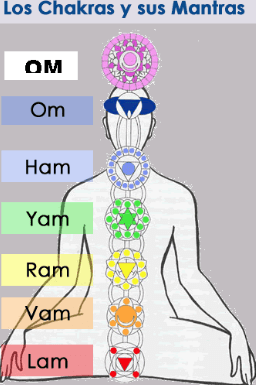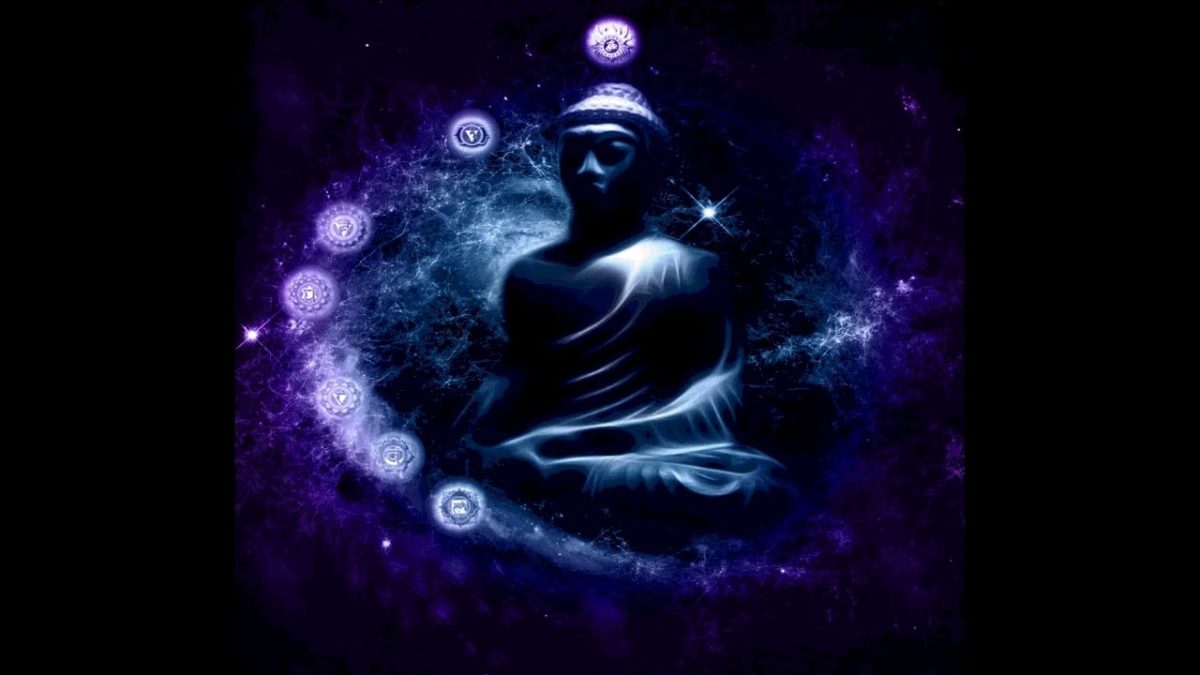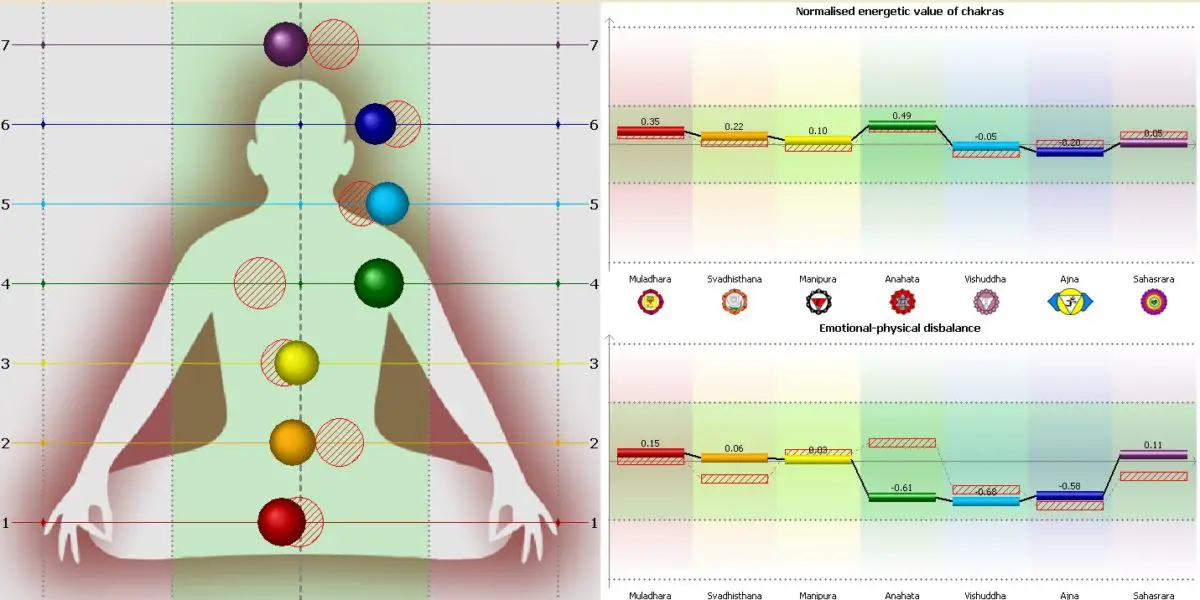The Sounds of the Chakras, has its characteristic in the benefit it brings to the sound that allows to harmonise and align the chakras; there are several sounds that help with the effective practice of restoring balance, as each chakra has a tonic note.

Sounds of the chakras
As we already know, the chakras are energy centres that mediate all the energy in the body and the energy that enters the body. They transmit electromagnetic impulses and absorb energy to help the body distribute it to its various physical, emotional, mental and spiritual functions. Each chakra is basically connected to the functions of the physical body through the endocrine glands and the spinal system. They transfer energy into and out of the body.
Through the nerve pathways and the circulatory system, the chakras are distributed throughout the body. Along the way, all organs, tissues and cells receive energy for their various functions. If a chakra is closed or blocked over a period of time, a certain weakness or imbalance will be felt, corresponding to the qualities of the affected chakra.
In order to establish a reciprocal relationship with the flow of electromagnetic energy of the chakras, tones, rhythms, instruments and vocalisations can be used to stimulate, balance and establish them so that they can also be opened in our heart. Bearing in mind that there is a connection with the physical, the same tones, rhythms, instruments and vocalisations can be used to achieve the desired effects on the corresponding physical organs and body systems.

To activate
To restore balance, sound and music are the most effective and easiest way to achieve balance. Specifically, musical tones and vocalisations cause the chakras and their electromagnetic emanations to respond. Similarly, when an imbalance occurs, specific tones can be used to restore homeostasis to the functioning of our electromagnetic aspects.
The seven major chakras each have a note in the musical scale that resonates in the major organs of the body. Each chakra has a tonic note. The use of a flute will simply help to balance the flow of energy in a particular chakra.
For each unbalanced chakra, an appropriate tone can be sung or played on a musical instrument, or a piece of music written in a key that is the primary tone for that chakra can be played.
Inexpensive synthesizers are available in some shops that can produce the tone or combination of tones that will help restore the balance of the specific energy centre and its physiological replica. Certain tones should be used to restore physical, emotional, mental or spiritual balance (see article: Chakras and Mantras).

For Chakras
- Root Chakra
When well stimulated, it can provide vital energy and increase a sense of enthusiasm and confidence as fears are felt to be diminishing. There are some sacred sounds that balance and stimulate it; its keynote is C major, heard on bass and percussion instruments, and the vowel used is the long ‘U’.
- Sacral Chakra
This chakra is affected by sensations and emotions. It is associated with consciousness and creativity. It controls most of the functions related to personality. In this case, the sacred sounds that balance and stimulate it are the tone of D, above C major, the instrument used is the bass, percussion or woodwind elements, its vowel sound is the long “O”.
- Solar plexus chakra
This chakra is associated with clairvoyance and psychic energies and experiences in general. It is also associated with rational thought processes. It is often activated for non-physical purposes and can reveal other people’s attitudes and abilities. It can stimulate our attunement to the influence of nature. The tone Me, above C major, is the balancing and stimulating tone, often found in flutes, woodwinds, stringed instruments and piano, its vowel sound is “Auh”.
- Heart Chakra
The heart chakra is responsible for awakening compassion and expressing it in our lives. Through this chakra we express higher love and revitalising energies. When stimulated in the right way, we gain insight into the deeper forces in plants and animals. It also awakens awareness of the feelings and dispositions of others. The tone of F, above C major, is the sound that stimulates and balances it; the instruments used are harp, organ, flute, recorder, glockenspiel and all stringed instruments and their long ‘A’ vowel sound (see article: Temples of Hinduism).
- Throat Chakra
This centre is associated with the functions of the right hemisphere and the creative functions of the mind. When stimulated, it increases clairaudience, although it is also believed to be able to open the consciousness to penetrate the true laws of natural phenomena. The sound that balances and stimulates it is the tone of G, above C major, and its instruments are: Harp, organ, piano and high stringed instruments. Vowel sounds of ‘E’, ‘I’, ‘U’ and short ‘A’.
- Third eye chakra
This chakra is the centre of higher clairvoyance. It has the ability to open the deepest and broadest perceptions. It also involves imagination and creative visualisation. It leads to inner vision. The note A, above C major, is the sound that balances and stimulates it; instruments such as the harp, organ, piano, wind chimes and high-pitched stringed instruments can be found echoing this and its long ‘E’ vowel sound.

- Crown Chakra
This chakra is related to the environment around us. The tone Yes, above C major, is responsible for balancing and stimulating the crown chakra. Instruments such as harp, organ, piano, wind chimes and high-pitched stringed instruments are important to hear this tone. Its long ‘E’ vowel sound.
The human body has the ability to discriminate between beneficial and harmful sounds and respond accordingly. This identification can have reactions that affect physical, emotional, mental and spiritual states, but many do not know the effects until a physical reaction occurs. Through the sound of our voice, we are able to aurally detect when balance has been achieved.
Sound can be used as an energy source to interact with other energies through music, voice or other sources, as it is often an effective means of altering the electromagnetic fields and impulses of a person or medium.
This means that when there is an imbalance in a particular organ or system, sound in any of its forms or combinations can be used to help restore homeostasis, alleviate pain or accelerate healing.

Sound can also be used as a source of energy to change consciousness. It offers benefits for improved concentration, relaxation, learning, creativity and increased understanding of psycho-spiritual states. To facilitate these processes, sound interacts with the brain and helps to alter its wave frequencies.
Sound has the ability to transport us to deeper energy levels in all aspects of our being. When they are louder and more intense, they are less likely to clash with external sources and we are better able to adapt them to resonate with a wider range of forces, people and circumstances.
Each person has their own natural tone, but there is a universal tone: this is the ideal vibration, the one that will ultimately resonate with the Divine; it will be the activator of harmony for all life rhythms. The tones of instruments and voices can be used to maintain our own natural tone while developing the link with the universal tone. The piano is very effective in determining our vocal tone, or any instrument with which we can play a few octaves or notes.

Through this exercise we will be able to sing the highest note we can without breaking our voice; we will then look for the lowest note. Generally, we work with the intermediate pitch between the two, but our range can be extended by appropriate techniques (see article: Symbology of Hinduism).
The deep timbre is used when we want to remain calm. When we want to show tones of kindness, we use a soft, gentle and light tone of voice. Obviously, through practice we can learn to create physiological and spiritual changes in ourselves and others, the effects of which can be seen by changing the timbre of speech and using the timbre of various instruments to obtain the benefits.




